Over the last few weeks, we’ve recapped some of the best posts about preparing to take a career break to travel from 2012, as well as the best from career breakers on the road. Today, we look back at some of the most valuable “how to” posts – practical advice that you can use before, during or after your career break!
How to Stay in Shape on the Road
 Five years out of college, Matt Sussman could no longer ignore his constant itch to travel. Leaving his stressful financial job in New York behind, he is following his dream of traveling the world. Meandering solo since July, Matt has made it a priority to find time to exercise and shared his tips for staying in shape on the road.
Five years out of college, Matt Sussman could no longer ignore his constant itch to travel. Leaving his stressful financial job in New York behind, he is following his dream of traveling the world. Meandering solo since July, Matt has made it a priority to find time to exercise and shared his tips for staying in shape on the road.
As I started planning my career break, I struggled with how I would manage to stay in shape on the road without a gym to go to every day. I had been looking for a theme to keep me sane in my travels and thought what better challenge to keep me motivated than trying to stay in shape while traveling around the world?
Searching online for how other travelers dealt with this dilemma yielded little useful advice. Sure I could just run every day but that would quickly get boring, not too mention the pounding my knees would take. Pulling what I could from crossfit sites and conversations with trainers, I started to assemble a word document of body weight exercises and routines that I could do on the road. Continue…
How to Land a Crewing Job at Sea
 Kelly Wetherington has been traveling since she first escaped her cubicle in 2007. Her insatiable curiosity for the world and thirst for adventure have led her to trek, dive, sail, zip, surf, climb, and paddle her way through 25 countries across Central America, Europe, Southeast Asia, and the Pacific. In this post, she shared her tips for finding a crewing job at sea.
Kelly Wetherington has been traveling since she first escaped her cubicle in 2007. Her insatiable curiosity for the world and thirst for adventure have led her to trek, dive, sail, zip, surf, climb, and paddle her way through 25 countries across Central America, Europe, Southeast Asia, and the Pacific. In this post, she shared her tips for finding a crewing job at sea.
Learn as much as you can before you seek a position.
Go sailing, practice tying knots, familiarize yourself with yachtie terms.
Learning to sail is like learning to speak a foreign language. If you aren’t willing to ask the dumb questions like “What does to reef mean?” then you will never learn the lingo (reefing is taking in a sail). Continue…
How to Account for a Career Break on Your Resume
One of the most common questions we get about re-entry is “how do I explain my career break on my resume?” This post offered some valuable tips and examples.
You arrive home at the end of a life-changing travel experience and one of the biggest questions facing you likely will be how to find work again. Whether you traveled as part of a career break, gap year, or sabbatical, you will need to figure out how to best represent the time and experiences on your resume.
Where should it go on my resume?
It depends. Do you think the experiences you had traveling apply to you finding a new job in your field? If so, then place it in the main part of your resume. If you don’t feel like it applies, then it probably belongs in a section reserved for Additional Information or Hobbies. Continue…
How to Make Career-Related Connections on the Road
 Bethany Rydmark is a landscape architect by trade and a lover of the world by nature. She and her husband Ted left their beloved home state of Oregon in 2012 to travel South America, the Mediterranean, the Middle East, Africa, Southeast Asia, and New Zealand. She made a point to make career-related connections before she hit the road and shared this advice.
Bethany Rydmark is a landscape architect by trade and a lover of the world by nature. She and her husband Ted left their beloved home state of Oregon in 2012 to travel South America, the Mediterranean, the Middle East, Africa, Southeast Asia, and New Zealand. She made a point to make career-related connections before she hit the road and shared this advice.
Though I left my job behind to travel the world for thirteen months, I did not abandon my career.
Intentional preparation allowed me to harness my professional skills, expand my experience and qualifications as a landscape architect, and add value to my travels. By laying groundwork before departure and remaining engaged on the road, I’ve connected with relevant projects and opportunities, and as a bonus, I’ve leveraged my skills to offset traveling expenses. While my story is connected to landscape architecture, the concepts apply to careers across the spectrum: nursing, construction, sales, finance, writing, painting, teaching…you name it!
As you plan your career break, consider these eight tips for making career-related connections on the road. Continue…
How to Make Processing Part of the Re-Entry Process
 Cate Brubaker helps all kinds of travelers navigate intercultural, personal, and re-entry experiences in her work with TrekDek, SmallPlanetStudio.com, and the University of North Carolina-Chapel Hill.
Cate Brubaker helps all kinds of travelers navigate intercultural, personal, and re-entry experiences in her work with TrekDek, SmallPlanetStudio.com, and the University of North Carolina-Chapel Hill.
You’re probably familiar with the terms re-entry and reverse culture shock. While some people sail through re-entry problem-free, most say they feel more lost upon returning home than they ever did abroad. This actually makes a lot of sense. When we go abroad we’re constantly in the “new.” We’re seeing new things, having new adventures, hearing new languages, trying new food, considering new perspectives.
It’s exhilarating. Euphoric. It’s why we travel!
Back home, we’re no longer in the “new.” Back home, we are the new. On one hand, we’re happy to be home with family and friends, speaking our native language, eating our favorite foods, and even sleeping in our own bed. But we also feel like something is a bit off. It’s not necessarily bad, just…off. Continue…
How to Accrue Frequent Flier Miles
 Mike Choi is known as the resident world traveler in his office and blogs about his travels at thefitworldtraveler.com. With his knowledge of FFM, he runs a part time frequent flyer mile consulting shop at iflywithmiles.com to help those with miles see the world. He provided a great two-part series earlier this year about how to accrue and redeem frequent flier miles. Here is an excerpt from part one:
Mike Choi is known as the resident world traveler in his office and blogs about his travels at thefitworldtraveler.com. With his knowledge of FFM, he runs a part time frequent flyer mile consulting shop at iflywithmiles.com to help those with miles see the world. He provided a great two-part series earlier this year about how to accrue and redeem frequent flier miles. Here is an excerpt from part one:
Frequent Flyer Miles (FFM) can be an excellent way to subsidize airfare costs during your career break. For those unfamiliar with FFM, they are a unit of rewards earned through an airline’s loyalty program by flying. The objective of these loyalty programs is to retain customers by rewarding customers with miles, which translate to free flights with enough accumulated miles.
In the United States, aside from flying, there are numerous ways to earn FFM such as purchases with co-branded airline cards and a slew of other promotional offers. Unless you have a lot of reimbursable expenses, purchases with a co-branded airline credit card will not generate enough miles for a flight in a timely manner. This post will focus on flying, assuming there are some future career breakers who travel for work and are allowed to accumulate FFM for personal use. Continue…
How to Redeem Frequent Flier Miles
The second part of Mike’s series on frequent flier miles focused on how to redeem those valuable miles.
As discussed in Monday’s post, How to Accrue Frequent Flier Miles, earning and redeeming miles can be a great way to save money on your career break.
All frequent flyer mile (FFM) programs publish an awards table for the required miles needed for a flight redemption. The exact number, of course, depends on your origin and destination countries. For instance, at the time of this writing, U.S. Airways, a Star Alliance member, requires 60,000 miles to fly round trip from North America to North Asia while United Airlines, another Star Alliance airline, requires 65,000 miles for the same round trip flight. Continue…








 Paul Fusco is an avid traveler who works as an Executive Recruiter at an international management consulting firm in Manhattan. He took his first career break in early 2010 and recently achieved a personal objective of visiting thirty countries by the age of thirty, celebrating in both Israel and Jordan. In his spare time Paul writes, maps out future destinations, and enjoys New York City for all it has to offer.
Paul Fusco is an avid traveler who works as an Executive Recruiter at an international management consulting firm in Manhattan. He took his first career break in early 2010 and recently achieved a personal objective of visiting thirty countries by the age of thirty, celebrating in both Israel and Jordan. In his spare time Paul writes, maps out future destinations, and enjoys New York City for all it has to offer.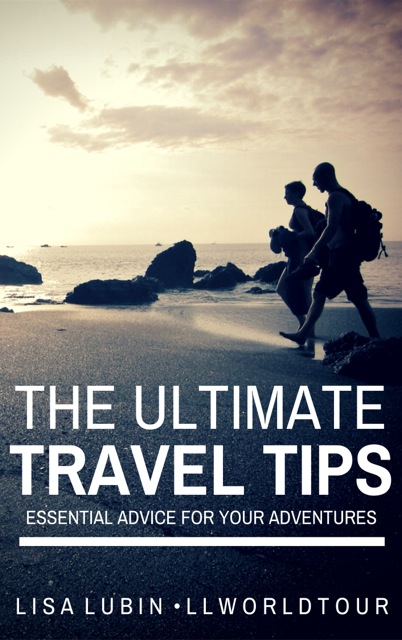
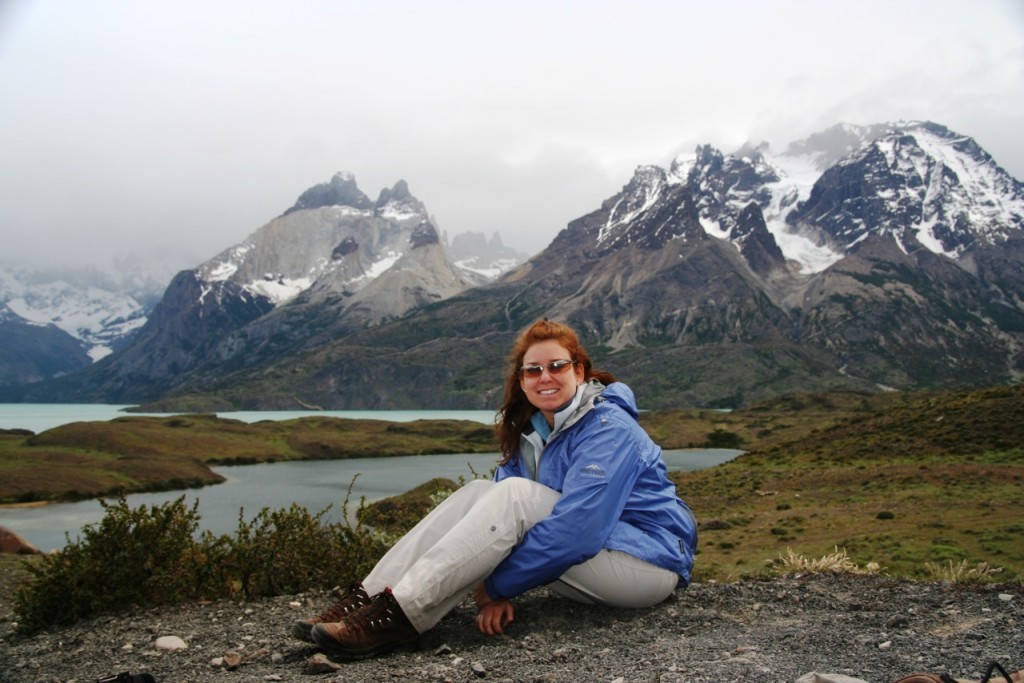


 Jade Johnston is a Canadian expat who now lives in Australia. She writes about budget travel, destination and adventure travel, and family travel on her blog,
Jade Johnston is a Canadian expat who now lives in Australia. She writes about budget travel, destination and adventure travel, and family travel on her blog, 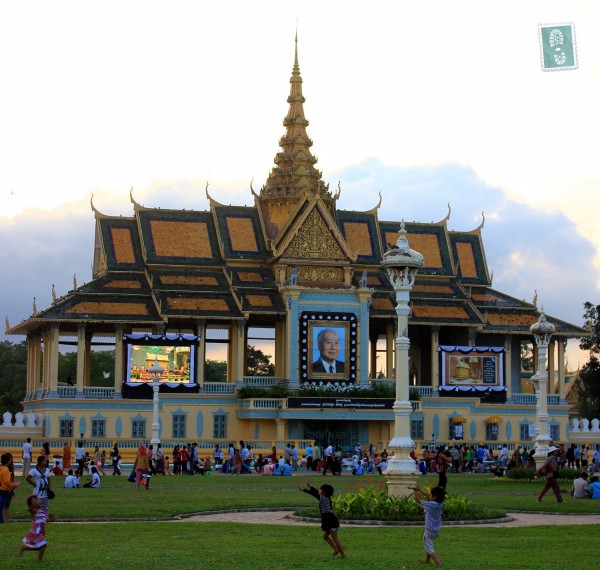
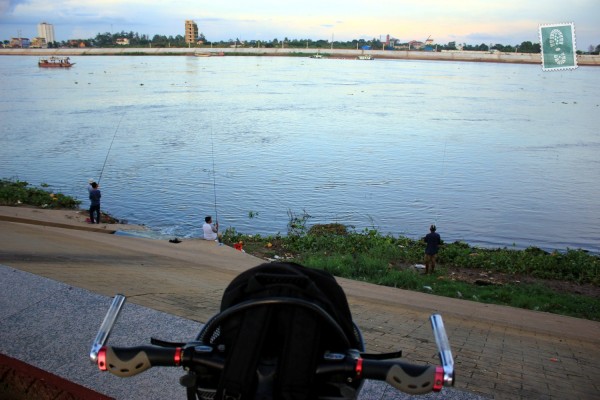

 Agness Walewinder is a Polish vagabond who, after graduation, left her comfort zone and set off for a journey of her lifetime to China in 2011. She has been constantly traveling the world since then (slowly, but surely as she says), living like a local for less than $25 a day. She is a passionate photography and adventure blogger sharing her life enthusiasm and travel experience with everyone around. Follow her adventures on
Agness Walewinder is a Polish vagabond who, after graduation, left her comfort zone and set off for a journey of her lifetime to China in 2011. She has been constantly traveling the world since then (slowly, but surely as she says), living like a local for less than $25 a day. She is a passionate photography and adventure blogger sharing her life enthusiasm and travel experience with everyone around. Follow her adventures on 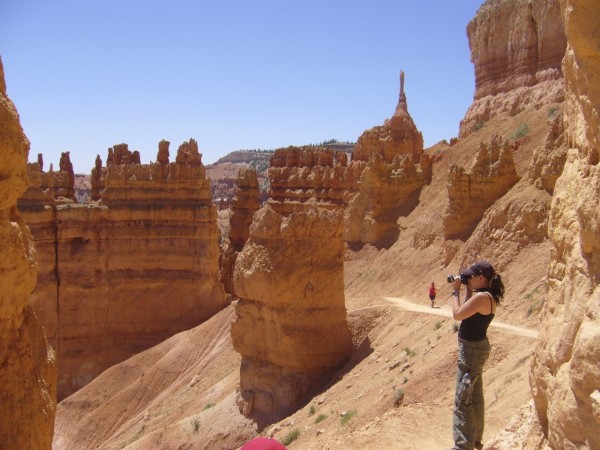 The recent death of a New York mother, Sarai Sierra, while traveling in Istanbul has led to scrutiny over whether it is safe for
The recent death of a New York mother, Sarai Sierra, while traveling in Istanbul has led to scrutiny over whether it is safe for 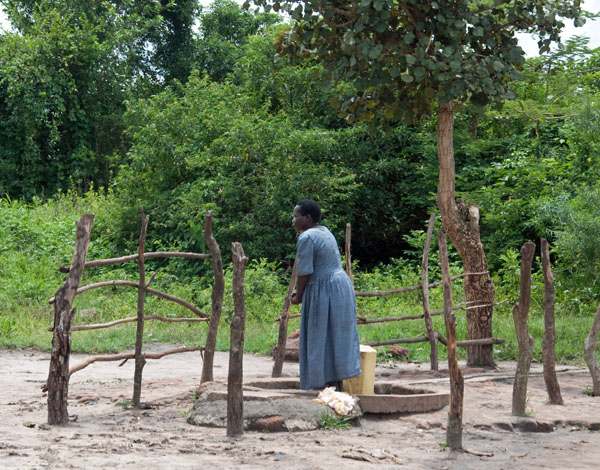

 A former finance executive, Erin Michelson is now an “Adventure Philanthropist,” who recently completed a two-year global giving adventure, visiting all 7 continents and exploring 60 countries. Volunteering with global non-profit organizations along the way, Erin helped build a house in the Philippines, a well in rural Uganda, and a library in northern Laos, sponsored secondary school education for a young woman in India and helped provide self-defense training for young girls in Israel. Read more about her experiences on
A former finance executive, Erin Michelson is now an “Adventure Philanthropist,” who recently completed a two-year global giving adventure, visiting all 7 continents and exploring 60 countries. Volunteering with global non-profit organizations along the way, Erin helped build a house in the Philippines, a well in rural Uganda, and a library in northern Laos, sponsored secondary school education for a young woman in India and helped provide self-defense training for young girls in Israel. Read more about her experiences on 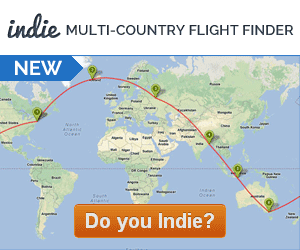
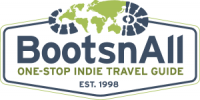 “The idea for this new web app was spawned from actual travelers’ feedback,” Sean Keener, co-founder and CEO of BootsnAll, says, “to give travelers the ability to search and book a multi-stop or round the world ticket in minutes. We’ve been serving RTW and long-term travelers since 1998, and one of the biggest pain points we have heard, thousands of times, is the difficulty in planning the airfare component. Indie solves this problem.”
“The idea for this new web app was spawned from actual travelers’ feedback,” Sean Keener, co-founder and CEO of BootsnAll, says, “to give travelers the ability to search and book a multi-stop or round the world ticket in minutes. We’ve been serving RTW and long-term travelers since 1998, and one of the biggest pain points we have heard, thousands of times, is the difficulty in planning the airfare component. Indie solves this problem.”
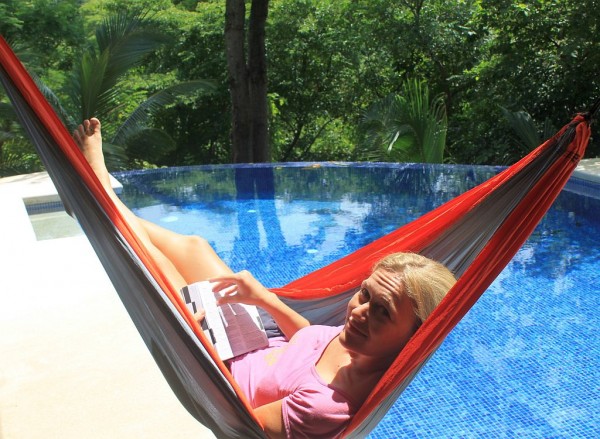 One thing that often holds people back from taking a career break to travel is the worry that long-term travel only involves living out of a suitcase on a limited budget. Taking that
One thing that often holds people back from taking a career break to travel is the worry that long-term travel only involves living out of a suitcase on a limited budget. Taking that 

 Dani and Jess are a German-American couple who left their adopted home of London and set off to travel the world in 2010. With the motto ‘Two Girls. One Globe. No Regrets’ they have since traveled through North America, Europe, Mexico, Central America, South East Asia and now South America, while running their travel website
Dani and Jess are a German-American couple who left their adopted home of London and set off to travel the world in 2010. With the motto ‘Two Girls. One Globe. No Regrets’ they have since traveled through North America, Europe, Mexico, Central America, South East Asia and now South America, while running their travel website  Five years out of college, Matt Sussman could no longer ignore his constant itch to travel. Leaving his stressful financial job in New York behind, he is following his dream of traveling the world. Meandering solo since July, Matt has made it a priority to find time to exercise and shared his tips for staying in shape on the road.
Five years out of college, Matt Sussman could no longer ignore his constant itch to travel. Leaving his stressful financial job in New York behind, he is following his dream of traveling the world. Meandering solo since July, Matt has made it a priority to find time to exercise and shared his tips for staying in shape on the road. Kelly Wetherington has been traveling since she first escaped her cubicle in 2007. Her insatiable curiosity for the world and thirst for adventure have led her to trek, dive, sail, zip, surf, climb, and paddle her way through 25 countries across Central America, Europe, Southeast Asia, and the Pacific. In this post, she shared her tips for finding a crewing job at sea.
Kelly Wetherington has been traveling since she first escaped her cubicle in 2007. Her insatiable curiosity for the world and thirst for adventure have led her to trek, dive, sail, zip, surf, climb, and paddle her way through 25 countries across Central America, Europe, Southeast Asia, and the Pacific. In this post, she shared her tips for finding a crewing job at sea. Bethany Rydmark is a landscape architect by trade and a lover of the world by nature. She and her husband Ted left their beloved home state of Oregon in 2012 to travel South America, the Mediterranean, the Middle East, Africa, Southeast Asia, and New Zealand. She made a point to make career-related connections before she hit the road and shared this advice.
Bethany Rydmark is a landscape architect by trade and a lover of the world by nature. She and her husband Ted left their beloved home state of Oregon in 2012 to travel South America, the Mediterranean, the Middle East, Africa, Southeast Asia, and New Zealand. She made a point to make career-related connections before she hit the road and shared this advice. Cate Brubaker helps all kinds of travelers navigate intercultural, personal, and re-entry experiences in her work with
Cate Brubaker helps all kinds of travelers navigate intercultural, personal, and re-entry experiences in her work with  Mike Choi is known as the resident world traveler in his office and blogs about his travels at
Mike Choi is known as the resident world traveler in his office and blogs about his travels at 





